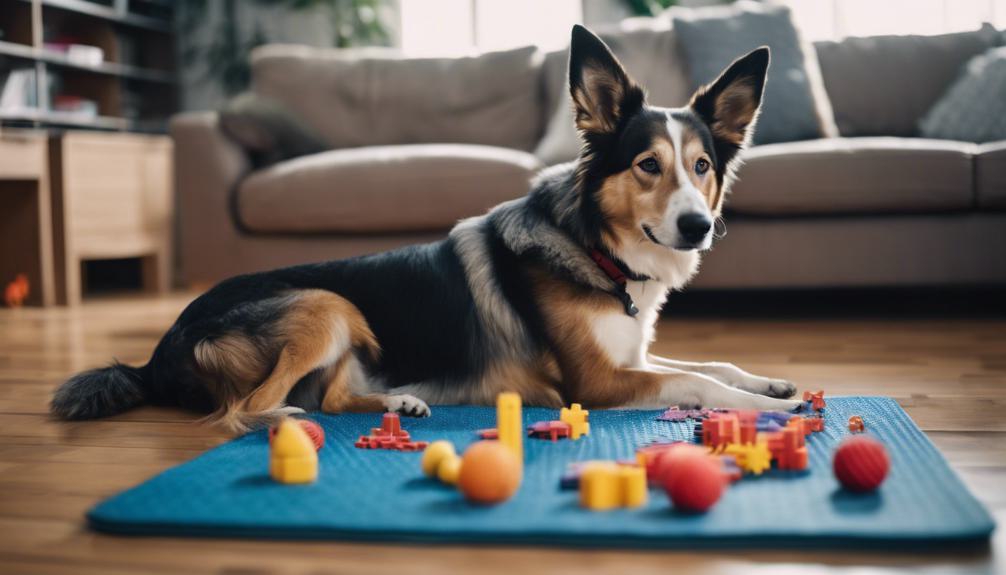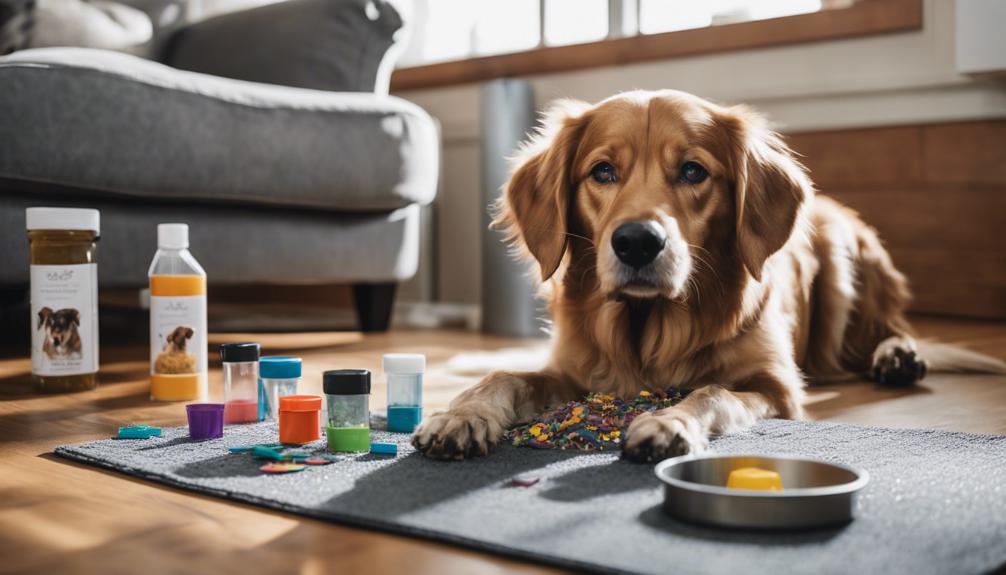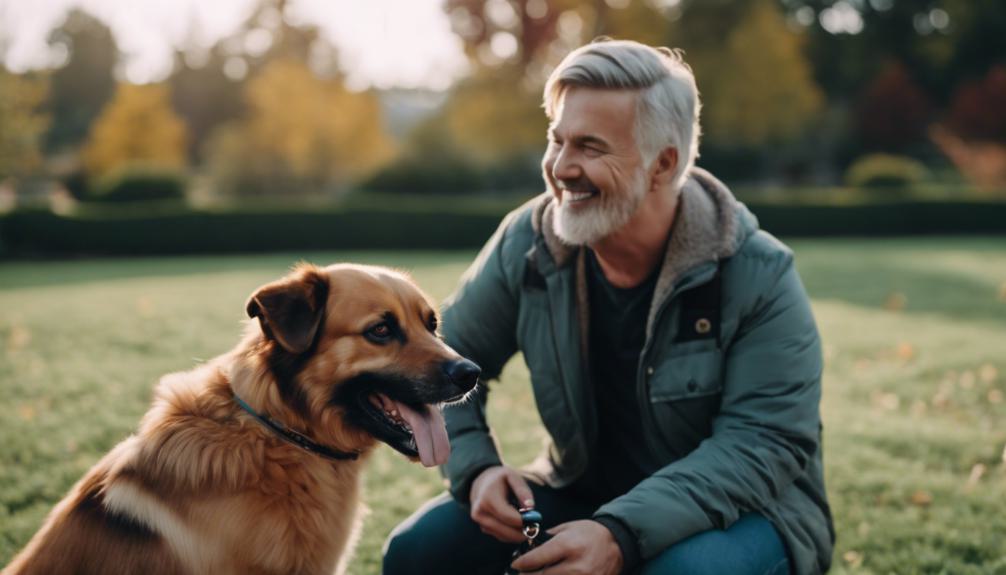How to Train an Adult Dog? Adult Pup Training Strategies
To train an adult dog effectively, establish a routine. Set up consistent schedules for training, meals, and exercise. This structure helps your dog know what to expect and fosters good habits. Use positive reinforcement by rewarding desired behaviors with treats or praise. Address any behavioral challenges promptly by seeking help if needed. Build trust and leadership through clear communication and patience. Incorporate enrichment activities like interactive toys or agility training. By following these steps, you’ll set a strong foundation for training your adult dog successfully. Further tips await on enhancing your training techniques.
Establishing a Training Routine
Start training your adult dog with a regular daily schedule. Include set times for training, meals, bathroom breaks, and exercise. This helps your dog know what to expect and brings structure to their day. Keeping a routine is crucial because it makes learning stick and forms good habits. A clear routine also means better communication between you and your dog, which builds trust and betters their behavior.
With this structured approach, your dog will feel more secure. They’ll know what each day brings, making them a happier and more obedient pet.
Positive Reinforcement Techniques
To train your adult dog effectively with positive reinforcement, reward good behaviors with treats, praise, or toys. Focus on reinforcing what you want your dog to do rather than punishing mistakes. This approach builds a stronger bond between you and your dog.
Consistency is key. Always reward your dog when they act as you wish. This encourages them to repeat those behaviors. Using positive reinforcement makes learning enjoyable for your dog and promotes active participation in training.
This method leads to a peaceful and cooperative relationship with your pet.
Addressing Behavioral Challenges

Addressing behavioral challenges in your adult dog requires clear and practical steps. Here’s how you can start:
- Identify the Problem: Check if your dog displays aggression, anxiety, excessive barking, or other issues. For example, a dog might bark excessively when left alone, indicating anxiety.
- Seek Professional Help: Work with a professional trainer or behaviorist. They can develop a customized training plan that suits your dog’s needs, focusing on issues like aggression or fear.
- Use Positive Reinforcement: Reward your dog for good behavior during training sessions. Use treats, praises, or toys as rewards to reinforce positive behaviors.
- Be Consistent and Adaptive: Stick to your training plan but be ready to make changes if needed. For instance, if your dog doesn’t respond to one method, try another tactic that might capture their attention better.
These steps are designed to be direct and actionable, helping you and your dog succeed.
Building Trust and Leadership
Address behavioral challenges in your adult dog by focusing on trust and leadership. This forms a strong foundation for effective training and a good relationship.
Like people, senior dogs respond well to positive reinforcement. Use a crate as a safe space for your older dog. This helps build trust and provides security during training.
Keep your training positive and consistent to reinforce your role as a confident leader. Communicate clearly and be patient, empathetic, and compassionate. These qualities strengthen your bond and create a good environment for training.
Incorporating Enrichment Activities

Engagement with enrichment activities boosts the mental and physical health of your adult dog, ensuring a balanced lifestyle. Here’s how to incorporate enrichment for your older dog:
Use Interactive Toys: Offer toys that dispense treats or require problem-solving to keep your dog’s mind active. Examples include puzzle feeders and treat balls.
Start Agility Training: Create a simple agility course in your backyard or join a local class. This activity challenges both the body and mind of your dog.
Play Scent Games: Conceal treats in your home or yard to engage your dog’s natural scent-tracking skills. This not only entertains but also sharpens their mental focus.
Integrate Training: Add short training sessions during daily routines like feeding time. This helps reinforce good behavior and keeps your dog mentally sharp, reducing behavioral problems.
Frequently Asked Questions
How Old Is Too Late to Train a Dog?
It’s never too late to train a dog! With patience and consistency, you can teach an adult dog new tricks. Older dogs may take longer to learn, but positive reinforcement and dedication will help.
Is It More Difficult to Train an Older Dog?
Training an older dog may seem challenging due to ingrained habits and physical limitations, but with patience, consistency, and tailored methods, it’s entirely possible to teach an adult dog new tricks and behaviors effectively.
How Do You Train an Older Dog That Has Never Been Trained?
To train an older dog that has never been trained, start with basic commands using positive reinforcement. Be patient and consistent, using treats and praise. Begin with short sessions, gradually increasing duration. Seek professional help if needed for effective training methods.
How Do You Train a New Adult Dog?
Assess your new adult dog’s knowledge, behaviors, and responses. Tailor training based on past experiences. Start with basic commands, use positive reinforcement, and a crate for house training. Establish a routine for consistency.
Conclusion
Training an adult dog requires consistency. Start by setting a daily routine that includes feeding, walks, and training sessions. Address any behavioral issues such as excessive barking or chewing by consulting a professional if needed. Build trust by regularly spending quality time with your dog and providing positive feedback for good behavior.
Include activities like puzzle toys, new tricks, and social outings to keep your dog mentally and physically stimulated. These efforts reinforce your leadership and strengthen your bond. Over time, your dog will learn to follow your commands and behave well.
Stay patient and persistent. Training an adult dog doesn’t happen overnight, but with steady progress, you’ll have a well-behaved companion. Enjoy the journey of training your dog, knowing that each small step contributes to big improvements.

